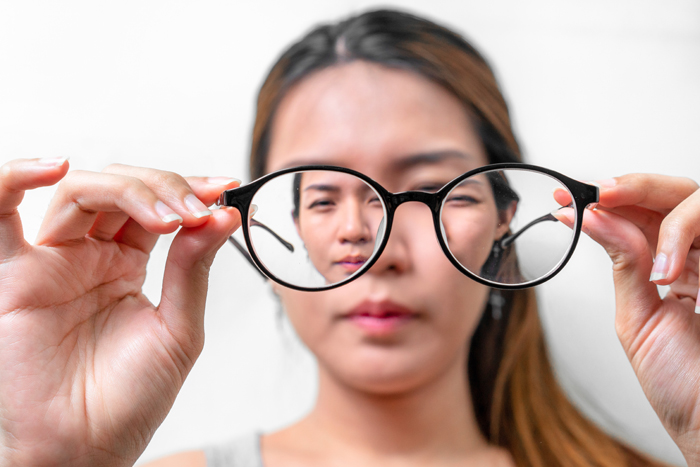Squint Eye Treatment in Karol Bagh, Delhi
Strabismus is also known as squint or crossed eye. It is a condition wherein the eyes do not see in the same direction at the same time. There are multiple modes of treatment like patching of the eye, exercises of the eye, medication, prescription-based glasses and eventually eye surgery.
To know more, contact an ophthalmology doctor near you or visit an ophthalmology hospital in New Delhi.
What is strabismus?
It is a condition wherein the eyes do not have the same line of vision. To simplify, the direction of turning of one eye is different from that of the other eye.
The movement of the eye is controlled by six muscles and that helps in pointing the eyes towards the same direction, but this alignment gets tampered and hence, the normal ocular alignment is disrupted which leads to crossed eyes.

What are the different types of strabismus?
This condition can be classified into multiple types and depends upon the direction of misalignment of the eye. These include:
- Inside turning:esotropia
- Outside turning:exotropia
- Upward turning:hypertropia
- Downward turning:hypotropia
What are the symptoms of this condition?
Usually, by the age of around four months, the eyes of a baby should be aligned enough to help them focus on objects that are nearby. By the age of 6 months, that focus should be on objects that are both nearby and far away.
This condition starts appearing and fully appears by the time a child turns around 3 years. There are some cases in which older children have also developed squinting, and double vision is also caused in some adults. This could either be because of squint or any other underlying neurological disorder. Either way, when there are problems in the alignment of the eye, consult your ophthalmologist or your healthcare provider.
Request an appointment at Apollo Spectra Hospitals, Karol Bagh, New Delhi. Call 1860 500 2244 to book an appointment.
What are the causes?
Strabismus occurs because of the inability to control eye movements. The failure in coordination between the extraocular muscles of the eye results in this. It can often be deemed genetic or hereditary as most people, around 3 in 10 who develop this condition, have a member in the family who also has the same issue. Multiple studies have now shown that squinting of the eye is associated with other conditions such as:
- Refractive errors that go uncorrected
- Dim vision in eyes
- Cerebral palsy
- Downs syndrome
- Hydrocephalus
- Brain tumor
- Stroke
- Injuries to the head
- Neurological trauma
- Graves disease
- Hypothyroidism
- Peripheral neuropathy
How is this condition diagnosed?
At the age of 3 to 4 months, a complete eye examination is performed by a pediatric ophthalmologist, and this helps in evaluating the condition and coming to a better diagnosis.
Patient history - wherein the entire family history is taken, general health problems are discovered and medication doses are prescribed or regulated.
Visual acuity - it is the ability to read the characters off an eye chart.
Refraction - checking the eyes for multiple refractive errors and then prescribing corrective lenses for all the problems.
- Focus test
- Alignment test
Widening of pupil aperture and then eye examination
What is the method of treatment for this eye condition?
The treatment of this eye condition includes multiple approaches which include:
- Prescription eyeglasses
- Prime lenses
- Contact lenses
- Eye exercises
- Medications
- Patching of the eye
- Eye surgery
What are the complications?
- Lazy eye
- Poor eye vision
- Blurry vision
- Fatigue of the eyes
- Double vision
- Poor 3-D view
- Brain tumor
Conclusion
Squint results in failure of coordination of the extraocular muscles of the eye and hence, results in misalignment of the eyes. This condition is treated with many approaches by a doctor, including exercises, medications and even surgery, if nothing else works. Consult a healthcare provider at the earliest.
No, in about 3 out of 10 people, it is genetic in nature and can be traced back to any individual in the family but it can also be caused by environmental reasons.
Some common medications that are usually prescribed are eye drops and eye ointments. They can either be used in conjunction with eye surgery or without it.
It is usually a method that is used to treat amblyopia or lazy eyes and squint eyes when the two conditions appear at the same time. That helps in improving the alignment of the eyes.
Symptoms
Our Doctors
DR. MRIDULA MEHTA
MBBS, MS - Ophthalmo...
| Experience | : | 22 Yeras Experience |
|---|---|---|
| Speciality | : | Ophthalmology... | Location | : | Chirag Enclave |
| Timings | : | Mon to Sat : 10:00 A... |
Our Top Specialities
NOTICE BOARD
CONTACT US
CONTACT US
 Book Appointment
Book Appointment



.svg)
.svg)
.svg)
.svg)








